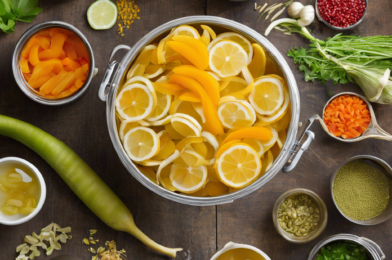Inflammation is your body’s natural response to injury or infection, but chronic inflammation can lead to various health issues and diseases. While acute inflammation is a necessary part of the healing process, when it becomes persistent and long-term, it can contribute to conditions like heart disease, diabetes, and even certain cancers. Fortunately, incorporating anti-inflammatory foods into your diet can help combat this. By making smart dietary choices, you can reduce the risk of inflammation-related health problems and promote overall well-being.
Fruits and vegetables are powerful allies in the fight against inflammation. Brightly colored options like berries, citrus fruits, and dark leafy greens are packed with antioxidants and phytochemicals, which help neutralize harmful free radicals in the body and reduce inflammation. Omega-3 fatty acids, found in abundance in fatty fish like salmon, mackerel, and sardines, are celebrated for their anti-inflammatory properties. These healthy fats can lower the production of inflammatory proteins and even reduce the symptoms of rheumatoid arthritis. Don’t forget to include plant-based sources of omega-3s like flaxseeds, chia seeds, and walnuts in your diet.
Herbs and spices offer more than just flavor and aroma; many of them possess potent anti-inflammatory properties. Turmeric, a staple in Indian cuisine, contains curcumin, a compound known for its powerful anti-inflammatory effects. Ginger, a close relative, has similar benefits and is often used to soothe digestive issues and reduce inflammation.
Certain whole grains, particularly those high in fiber, play a role in reducing inflammation. Quinoa, brown rice, and oats are excellent choices as they can help lower levels of C-reactive protein, a marker of inflammation in the blood. Additionally, incorporating healthy fats like olive oil, avocado, and nuts can further support your anti-inflammatory efforts.
When it comes to beverages, green tea and coffee are worth highlighting. Green tea is rich in catechins, antioxidants that have been linked to reduced inflammation and improved heart health. Coffee, in moderation, has also been associated with lower inflammation markers, thanks to its polyphenol content.
Maintaining a balanced diet is key to managing inflammation. Include a variety of fruits, vegetables, whole grains, lean proteins, and healthy fats in your meals. Avoid processed foods, sugary drinks, and excessive amounts of red meat, as these can contribute to inflammation.
In conclusion, adopting an anti-inflammatory diet can significantly impact your overall health. By incorporating colorful fruits and vegetables, omega-3-rich foods, herbs, and spices, you can effectively reduce inflammation and lower the risk of related diseases. Remember, small dietary changes can lead to big improvements in your health and well-being.







